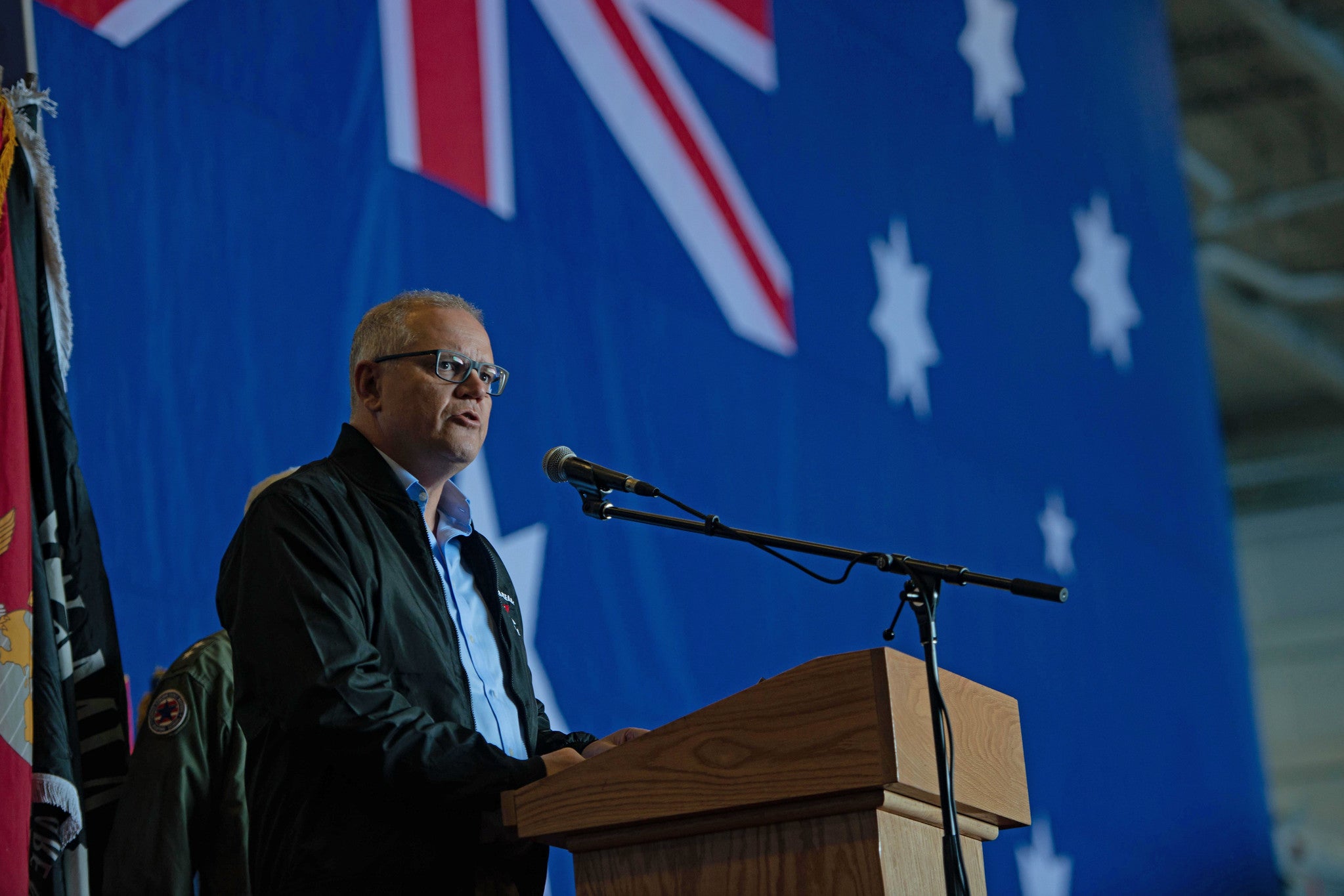
The federal government of Australia has set out plans a national net-zero target for 2050. Unlike most other developed economies, Australia will not enshrine the target in law. Instead, the government expects consumers and companies to take action with investment but no legal incentive.
The plan brings Australia closer to the plans of international allies ahead of next week’s COP26 climate conference.
In a press conference on Tuesday, Australian Prime Minister Scott Morrison presented his government’s climate plan. Australia is the world’s largest exporter of coal, and one of the largest exporters of gas.
At a press conference, Morrison said: “It is not a revolution, but a careful evolution to take advantage of changes in our markets. It’s not a ‘set and forget’ plan. It has an insurance policy review mechanism to make sure that it keeps delivering for regional Australia.”
These reviews would occur every five years. The federal government will invest A$20bn ($15bn) by 2030, helping to develop hydrogen, energy storage, and ultra-cheap solar. The funds will also help decarbonisation technologies for steel and aluminium production, alongside carbon capture and storage.
“Technology, not taxes” leaves decarbonisation plan unclear
Since 2015, the federal government has aimed for a 26%-28% cut in carbon emissions compared by 2030, compared to levels in 2005. Current modelling suggest that the country will actually reduce emissions by 30%-35%, but Morrison has refused to adjust the target. The government has refused to release the model that suggests the long-term plan would meet net-zero targets.
How well do you really know your competitors?
Access the most comprehensive Company Profiles on the market, powered by GlobalData. Save hours of research. Gain competitive edge.

Thank you!
Your download email will arrive shortly
Not ready to buy yet? Download a free sample
We are confident about the unique quality of our Company Profiles. However, we want you to make the most beneficial decision for your business, so we offer a free sample that you can download by submitting the below form
By GlobalDataFurthermore, some large areas of the plan specify few details. The plan designates another 20% of decarbonisation as driven by “global trends”, without further clarification. Minister for Industry, Energy and Emissions Reduction Angus Taylor later verbally clarified that this referred to technologies such as electric vehicles.
A further 20% of carbon reductions would come through offsetting, showing that the country would still produce significant emissions in 2050. Taylor said that these offsets would come through agricultural land management.
He continued: “We’re starting to see very significant offsets emerging from soil carbon [sequestration]. We have 90 million hectares of productive agricultural land, which is already a carbon sink. It can be a much bigger one. Carbon capture and storage offers a great potential as well, particularly for the production of hydrogen.”
The plan also relies heavily on “technology breakthroughs”, which it expects to deliver 15% of decarbonisation. The plan does not specify which breakthroughs it anticipates.
Morrison’s refrain of “technology, not taxes” emphasises his aim to “preserve the unique Australian way of life, especially in rural and regional areas”. He told press: “Australians are taking action on climate change, but they also want to protect their jobs and their livelihoods.”
Pressure from all sides, in all directions
The National Party, coalition partner to Morrison’s Liberal Party, previously objected to any disruption to Australia’s massive fossil fuel-based industries. A political deal made on Sunday enabled Morrison to announce the decarbonisation plan, after weeks of negotiation.
As recently as two weeks ago, government politicians objected to changes in the country’s coal industry as being “driven by ideology, not markets”. Resources Minister Keith Pitt of the National Party refused to support a net-zero target at the time, saying: “”I want to be very clear to Australia’s banks and the world’s banks, they don’t set domestic policy in this country.”
While Australia’s federal government has proved reluctant to take action on climate change, regional governments have pressed on. Victoria committed more than $1bn to renewable energy hubs, while Queensland made a smaller commitment toward developing 16GW of renewable generation.
The federal government has also supported decarbonisation efforts, without fully committing to net zero. Within the past 18 months, the government has pledged funding for low-emissions technologies and renewable energy innovation.
Morrison has faced increasing political pressure on climate issues, particularly since the devastating 2019-2020 wildfire season. Opposition politicians from the centre-left Labor Party have repeatedly criticised the government’s unmoving climate policies. Australians will next elect their leaders in May 2022, with opinion polls suggesting that Morrison’s party will lose to Labor.



